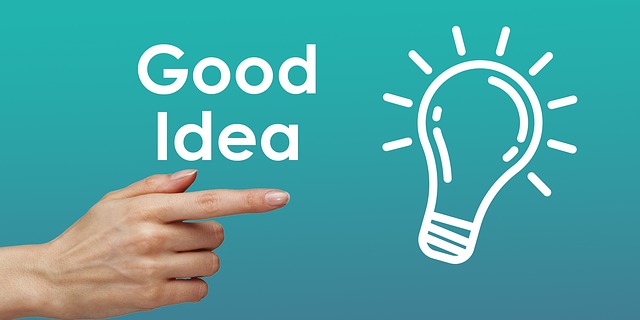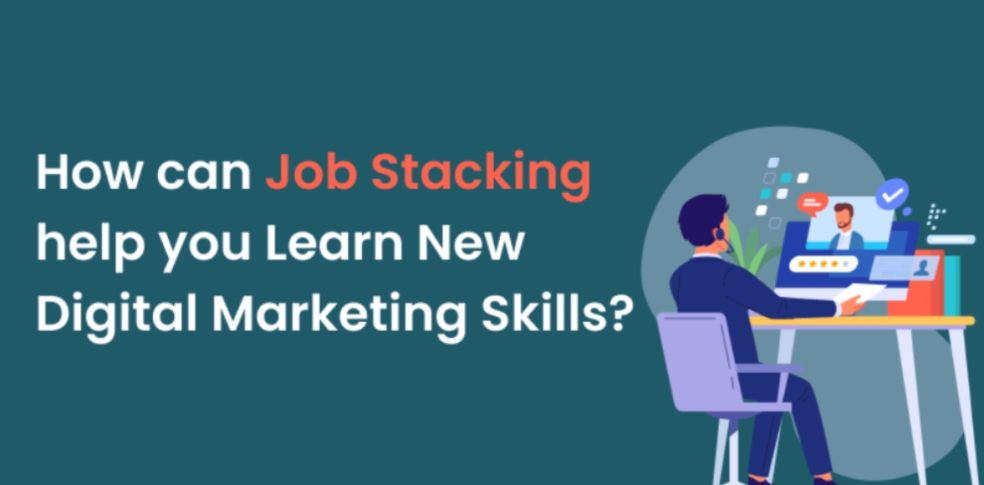

In today’s fast-paced digital era, continuous learning and upskilling have become imperative for professionals, particularly in the field of digital marketing. With rapid advancements and evolving trends, staying ahead of the curve requires acquiring new skills and knowledge. One effective strategy to learn and grow in this domain is job stacking.
Enrolling in a Digital Marketing Course lays the foundation for acquiring essential knowledge and skills in the field. However, the true power of skill development lies in the synergy between a marketing course and job stacking. Job stacking allows professionals to apply the concepts learned in the course to real-world scenarios, gaining practical experience and honing their skills.
By strategically combining multiple job roles or tasks, professionals can immerse themselves in diverse digital marketing areas, leading to enhanced skill development and accelerated career progression. In this article, we will explore how job stacking can be utilized as a powerful approach to acquiring new marketing skills.
Understanding Job Stacking
Job stacking is a unique approach to career development that involves intentionally combining different job roles or tasks within a single profession or industry. It goes beyond the traditional notion of a single job description and allows professionals to expand their skill set and knowledge by taking on additional responsibilities or cross-functional projects.
The concept of job stacking recognizes that career growth and learning can extend beyond a linear progression within a specific role. It encourages individuals to seek opportunities to diversify their experiences, gain exposure to different aspects of their field, and cultivate a deeper understanding of their industry.
By engaging in job stacking, professionals can benefit in several ways. Firstly, it offers enhanced skill development. By immersing themselves in various job roles or tasks, individuals can acquire new knowledge and expertise in different areas of their profession. For example, a digital marketer may stack their job by taking on additional responsibilities in social media management, content creation, email marketing, or data analytics. This exposure enables them to develop a well-rounded skill set, making them versatile and adaptable in their field.
Job stacking also promotes the exchange of ideas. Professionals that have several work positions or duties have the ability to communicate with many teams, departments, or clients. This connection encourages the interchange of ideas and insights across several fields. Learning concepts or tactics in one field can be transferred to another, resulting in innovation, creativity, and the capacity to think beyond the box. This cross-pollination of ideas is particularly valuable in the dynamic and ever-evolving field of digital marketing, where staying ahead of trends and competition is essential.
The Advantages of Job Stacking
Let’s explore some of these advantages:
Enhanced Skill Development: Job stacking allows professionals to gain practical experience and develop expertise in various aspects of marketing. By taking on additional responsibilities or projects, individuals can acquire knowledge and skills in areas such as social media marketing, search engine optimization (SEO), content creation, email marketing, data analytics, and more. This diverse skill set not only makes professionals more valuable to employers but also provides them with a competitive edge in the job market.
Cross-Pollination of Ideas: When professionals engage in job stacking, they have the opportunity to work with different teams, departments, or clients. This exposure creates an environment where ideas and insights from one area can be applied to another. For example, strategies learned in social media marketing can be integrated into content creation or data analytics techniques can inform SEO practices. This cross-pollination of ideas leads to innovation, creativity, and the ability to approach digital marketing challenges from multiple perspectives.
Versatility and Adaptability: Job stacking cultivates versatility and adaptability, essential qualities in the rapidly evolving digital landscape. By gaining experience in various job roles or tasks, professionals become more flexible and can easily transition between different responsibilities. This adaptability allows them to meet the changing demands of clients, projects, or industry trends, positioning them as valuable assets within their organizations.
Professional Growth and Career Advancement: Job stacking opens up opportunities for professional growth and career advancement. By expanding their skill set and knowledge base, professionals become eligible for more diverse and challenging roles within digital marketing. They can take on leadership positions, manage multidisciplinary projects, or even venture into entrepreneurship with a solid foundation across multiple domains.
Expanded Network and Collaboration: Job stacking often involves collaborating with colleagues from different departments, teams, or even external partners. This collaboration allows professionals to expand their professional network and build relationships with individuals who possess complementary skills and expertise. This expanded network can lead to valuable connections, mentorship opportunities, and potential collaborations on future projects.
Strategies for Implementing Job Stacking
Implementing job stacking in DM requires a proactive approach and careful planning. Here are some effective strategies to consider:
Seek Additional Responsibilities: Engage with your superiors or team leaders and express your interest in taking on additional tasks or projects that align with your career goals. Actively seek opportunities to expand your responsibilities within your current role. This may involve volunteering for cross-functional teams, offering to assist colleagues in different areas, or proposing new initiatives within your organization. By demonstrating your willingness to take on diverse tasks, you increase your chances of job stacking opportunities.
Embrace Freelancing and Side Projects: Freelancing platforms and gig economy opportunities provide avenues for job stacking. Consider taking on side projects or freelance work in areas that interest you within the field. This allows you to gain experience in various digital marketing disciplines, work with different clients, and expand your portfolio. Freelancing also offers flexibility and the ability to choose projects that align with your career goals.
Collaborate Across Departments: Actively communicate and collaborate with colleagues from different departments within your organization. Engage in knowledge-sharing sessions, attend cross-departmental meetings, and seek opportunities to understand their roles and responsibilities. This cross-departmental interaction exposes you to different aspects of digital marketing and fosters a broader understanding of the overall operations. It can also lead to collaborations on projects that involve multiple teams, further enhancing your skill set.
Continuous Learning: Invest time in self-study and take advantage of online courses, webinars, workshops, and conferences. Stay updated with industry trends, best practices, and emerging technologies. Identify areas of digital marketing that you are interested in but lack experience in, and focus your learning efforts on those. By continuously learning and staying up-to-date, you equip yourself with the knowledge and skills necessary for effective job stacking.
This Digital Marketing Training is for your better clarity.
Conclusion
Job stacking offers a powerful approach for professionals to acquire new skills. By strategically combining multiple job roles or tasks, individuals gain exposure to diverse digital marketing areas, leading to enhanced skill development, cross-pollination of ideas, and an expanded network. Implementing job stacking requires seeking additional responsibilities, embracing freelancing and side projects, collaborating across departments, and continuous learning.

Leave a Reply